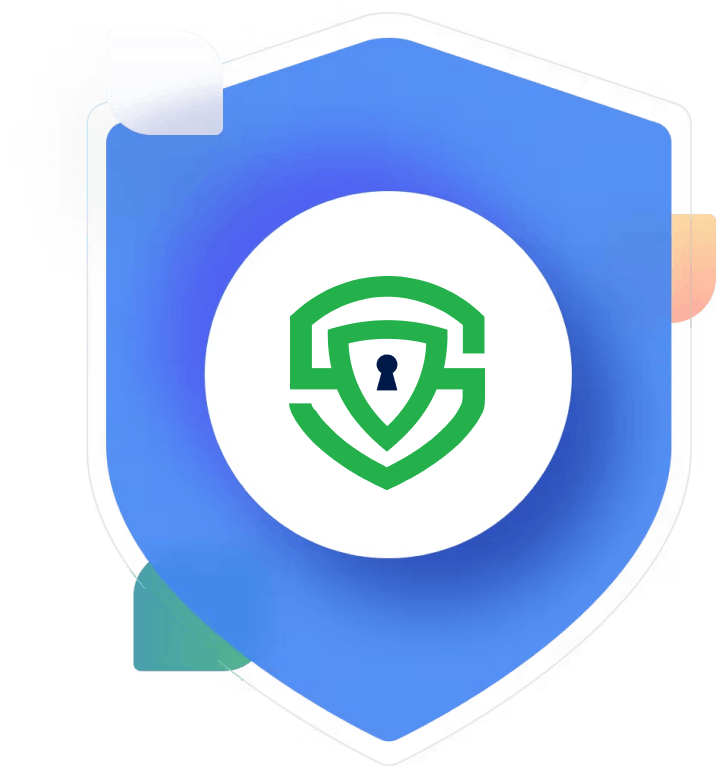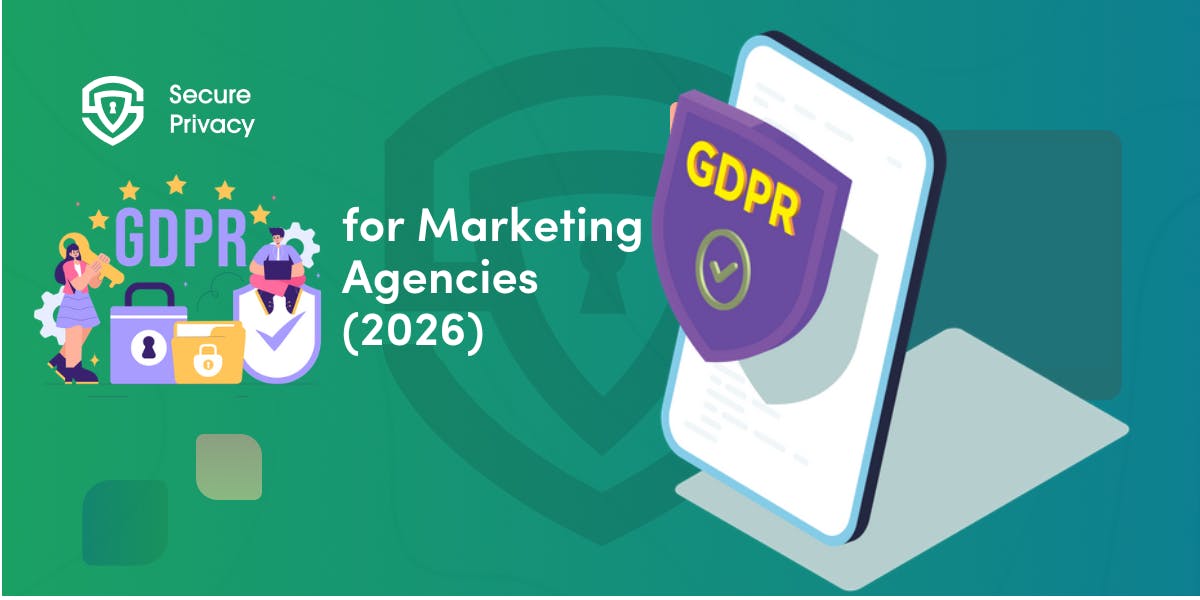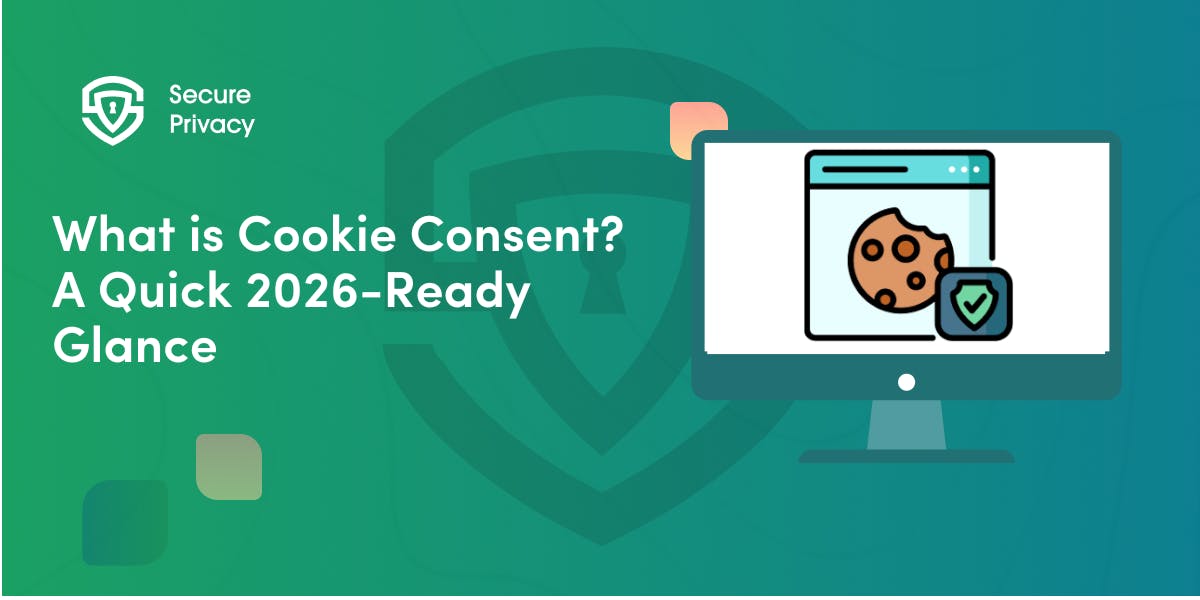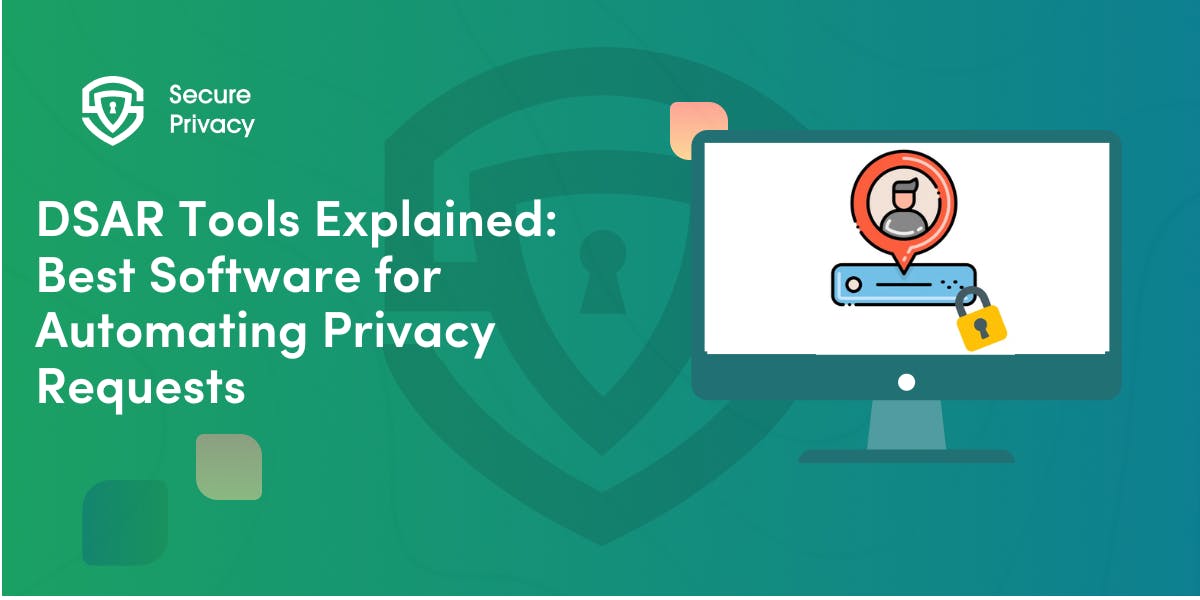Privacy Program Maturity: Reach Compliance Excellence
Your company faces increasing regulatory scrutiny while managing data protection compliance through scattered policies and reactive approaches. Manual assessment methods provide incomplete visibility into program effectiveness while exposing critical gaps that could result in costly violations and regulatory penalties.
Privacy program maturity assessment changes ad-hoc compliance efforts into strategic frameworks that show accountability, optimize resource use, and build sustainable competitive advantages. Modern assessment tools provide complete visibility into organizational data protection posture while creating actionable improvement roadmaps that ensure regulatory compliance and stakeholder confidence.
This complete guide explores proven maturity frameworks, assessment methods, and software solutions that enable systematic program optimization and measurable compliance improvement.

Prioritizing user privacy is essential. Secure Privacy's free Privacy by Design Checklist helps you integrate privacy considerations into your development and data management processes.
Understanding Maturity Frameworks
Maturity models provide structured approaches for evaluating organizational data protection capabilities across multiple dimensions including governance, policies, risk management, training, and operational implementation. These frameworks enable systematic assessment of current state capabilities while identifying specific improvement pathways toward excellence.
Privacy compliance maturity model implementations follow established progression patterns that organizations can adapt to their specific regulatory environments and operational contexts. Most frameworks use five maturity levels ranging from initial reactive approaches to optimized proactive governance that integrates smoothly with business operations.
Level 1 represents initial or reactive management where practices remain ad-hoc and unpredictable with minimal documentation and reactive responses to issues. Organizations at this basic level lack formal policies while relying heavily on individual efforts rather than institutional processes and systematic frameworks.
Level 5 represents optimized or proactive integration where data protection becomes embedded within organizational culture through continuously refined processes, automated workflows, and smooth integration into daily operations. Organizations at this advanced level lead industry innovation while maintaining excellent regulatory compliance and stakeholder trust.
The Five-Level Maturity Progression
Initial Stage: Reactive Management
Organizations operating at the initial maturity level typically respond to requirements only when regulatory pressure or incidents force attention to data protection obligations. Documentation remains scattered across departments while decisions occur without systematic frameworks or consistent application of protection principles.
Practices at this level depend heavily on individual knowledge rather than institutional processes. Risk identification remains informal while remediation efforts lack coordination across business units and operational functions.
Managed Stage: Basic Policy Development
Level 2 maturity introduces basic policies and procedures while processes remain non-standardized across organizational functions. Initial documentation and record-keeping systems emerge alongside basic compliance activities that address immediate regulatory requirements without complete strategic planning.
Training programs begin addressing awareness while incident response capabilities develop basic structure and coordination protocols. Vendor management starts incorporating third-party risk management considerations into procurement and contract management processes.
Defined Stage: Standardized Operations
Level 3 maturity establishes proactive measures with standardized documentation, consistent practices, and clearly defined governance roles across organizational structures. Complete policies receive regular updates while integration with business processes ensures systematic consideration in operational decision-making.
Risk assessment processes become formalized while incident response capabilities mature into coordinated organizational capabilities. Training programs expand to address role-specific requirements while vendor management incorporates complete risk evaluation and ongoing monitoring protocols.
Managed Stage: Metrics-Driven Optimization
Level 4 organizations introduce advanced metrics including impact assessment completion rates, incident response effectiveness measurements, and employee training analytics that drive continuous improvement initiatives. Quantitative measurement enables data-driven optimization while supporting strategic resource use and enhancement decisions.
Automated monitoring systems provide real-time visibility into compliance status while predictive analytics identify emerging risks before they escalate into violations or regulatory scrutiny. Performance dashboards support executive decision-making while showing effectiveness to stakeholders and regulatory authorities.
Optimized Stage: Strategic Leadership
Level 5 maturity represents integration into organizational culture through continuously refined processes, automated workflows, and smooth integration with business strategy and operational excellence. Organizations at this level show industry leadership while maintaining excellent compliance and stakeholder relationships.
Advanced analytics and machine learning capabilities optimize performance while predictive risk management prevents issues before they impact business operations or regulatory standing. Considerations influence strategic business decisions while supporting competitive advantage through demonstrated trustworthiness and regulatory excellence.
Key Assessment Dimensions and Categories
Governance and Accountability Framework
Complete governance assessment evaluates organizational leadership structures, accountability mechanisms, and strategic integration with business objectives. Effective governance frameworks establish clear roles and responsibilities while ensuring appropriate oversight and decision-making authority for related matters across organizational functions.
Officer effectiveness, board-level oversight, and cross-functional collaboration capabilities represent critical governance components that influence overall maturity. Assessment tools evaluate governance structure adequacy while identifying improvement opportunities for enhanced accountability and strategic alignment.
Policy Development and Management
Policy assessment examines the completeness, currency, and effectiveness of organizational policy consent management across different operational contexts and regulatory requirements. Mature policy frameworks address all relevant regulations while providing clear guidance for employees, contractors, and third-party partners.
Privacy program checklists should evaluate policy coverage, update frequencies, training integration, and compliance monitoring effectiveness. Regular policy review cycles ensure continued relevance while accommodation of changing business operations and evolving regulatory landscapes maintains compliance effectiveness.
Risk Management and Assessment Capabilities
Risk assessment capabilities represent basic components that enable proactive identification, evaluation, and reduction of related risks across organizational operations. Mature risk management frameworks integrate with broader enterprise risk management while providing specific analysis and remediation capabilities.
Risk assessment frequency, methodology sophistication, and integration with business decision-making processes indicate maturity levels. Advanced programs use predictive analytics while maintaining complete risk registers that support strategic planning and resource use optimization.
Training and Awareness Programs
Employee training and awareness programs are critical components that determine organizational culture and compliance effectiveness across diverse operational contexts. Mature training frameworks address role-specific requirements while providing ongoing education that adapts to changing regulatory requirements and operational challenges.
Training effectiveness measurement, completion rates, and behavioral impact assessment indicate maturity levels. Advanced programs use adaptive learning technologies while providing personalized training experiences that optimize knowledge retention and practical application in workplace situations.
Assessment Software Solutions
Complete GRC Platform Integration
Enterprise governance risk and compliance software platforms provide integrated assessment capabilities within broader organizational risk management frameworks. These complete solutions enable centralized monitoring while supporting coordination with other compliance obligations and risk management activities.
Leading platforms offer automated assessment workflows, stakeholder collaboration tools, and complete reporting capabilities that support both operational management and executive oversight requirements. Integration with existing business systems ensures complete visibility while minimizing administrative overhead and implementation complexity.
Specialized Assessment Tools
Dedicated privacy governance software solutions for DPOs provide focused capabilities for organizations prioritizing maturity assessment and improvement. These specialized platforms offer deep expertise while providing industry-specific templates and regulatory guidance that accelerates implementation and optimization efforts.
Assessment automation capabilities reduce manual effort while ensuring complete coverage of elements. Customizable frameworks work with organizational variations while maintaining regulatory compliance and industry best practice alignment across different operational contexts.
Role-Based Assessment Functionality
Advanced assessment platforms provide role-specific evaluation workflows that work with different organizational responsibilities and expertise levels. Data Protection Officers, IT administrators, legal staff, and business unit leaders receive tailored assessment experiences that optimize their contributions while ensuring complete evaluation.
Collaborative assessment capabilities enable cross-functional participation while maintaining appropriate access controls and information security. Workflow management ensures systematic completion while providing progress visibility and coordination support for complex organizational structures.
Spider Chart Visualization and Maturity Reporting
Visual Maturity Representation
Spider chart privacy maturity report implementations provide easy visual representations of organizational strengths and weaknesses across multiple assessment dimensions. These radar-style charts enable immediate identification of improvement priorities while supporting stakeholder communication and strategic planning initiatives.
Interactive visualization capabilities allow detailed exploration of assessment results while maintaining high-level overview perspectives that support executive decision-making and board reporting requirements. Comparative analysis features enable benchmarking against industry standards and previous assessment cycles.
Complete Reporting Capabilities
Automated report generation produces professional documentation that supports regulatory compliance, stakeholder communication, and strategic planning requirements. Privacy audit reporting templates work with different audience needs while maintaining consistency and professional presentation standards.
Executive summary reports provide high-level insights while detailed technical reports support operational improvement planning and implementation activities. Historical trending capabilities show improvement over time while supporting return on investment calculations and resource allocation justification.
Implementation Best Practices and Strategic Considerations
Assessment Methodology Development
Successful maturity assessment requires systematic methodology development that works with organizational complexity while ensuring complete coverage of elements. Baseline establishment through initial assessment provides foundation for improvement planning and progress measurement over time.
Target maturity level definition should align with organizational risk tolerance, regulatory requirements, and business objectives while considering available resources and implementation timelines. Gap analysis identifies specific improvement requirements while prioritization ensures optimal resource use and measurable progress toward maturity goals.
Stakeholder Engagement and Change Management
Maturity improvement requires cross-functional collaboration involving legal, IT, security, compliance, and business teams. Clear communication of assessment objectives, methodology, and expected outcomes ensures stakeholder buy-in while facilitating effective participation in assessment and improvement activities.
Change management processes should address organizational culture considerations while providing appropriate training and support for new processes and technologies. Regular communication maintains momentum while celebrating achievements and addressing challenges that emerge during implementation and optimization phases.
Privacy risk management tool Integration
Assessment platforms should integrate smoothly with existing risk management tools and processes to ensure complete visibility and coordination across activities. API connectivity enables data sharing while preventing information silos that could compromise effectiveness.
Real-time synchronization ensures assessment results reflect current organizational capabilities while supporting dynamic improvement planning and resource use optimization. Integration with incident management systems provides valuable context for risk assessment while supporting lessons learned incorporation.
Continuous Improvement and Optimization
Regular Assessment Cycles
Maturity assessment requires regular evaluation cycles that work with changing business operations, evolving regulatory requirements, and emerging risks. Quarterly assessments provide frequent progress monitoring while annual complete evaluations support strategic planning and resource allocation decisions.
Assessment scheduling should align with business planning cycles while working with regulatory reporting requirements and audit preparation activities. Continuous monitoring capabilities identify emerging issues while supporting proactive intervention before problems impact effectiveness or regulatory compliance.
Privacy posture improvement Strategies
Systematic improvement planning translates assessment results into actionable implementation roadmaps that optimize resource utilization while ensuring measurable progress toward maturity goals. Priority-based implementation ensures high-impact improvements receive appropriate attention while maintaining operational stability and stakeholder confidence.
Performance measurement enables optimization of improvement strategies while showing return on investment for enhancement activities. Regular progress reviews ensure continued alignment with organizational objectives while working with changing business priorities and regulatory requirements.
Transform Your Program with Strategic Maturity Assessment
The Assessment module delivers complete privacy compliance maturity framework capabilities that transform scattered compliance efforts into strategic organizational advantages. Organizations achieve systematic optimization while ensuring regulatory compliance and stakeholder confidence through structured assessment and improvement processes.
Essential Maturity Features:
- ✅ Role-based assessment workflows with customizable elements
- ✅ Complete progress tracking with collaborative notes and documentation
- ✅ Automated spider chart visualization showing strengths and improvement areas
- ✅ Actionable recommendations with priority-based improvement roadmaps
- ✅ Integration with broader governance and compliance management systems
- ✅ Regular reporting capabilities supporting executive oversight and regulatory compliance
Leaders report 60% faster identification of compliance gaps while achieving measurable maturity improvements within 90 days of structured assessment implementation. Transform scattered activities into strategic excellence that shows organizational commitment to protection and regulatory compliance.
Assess your maturity today to discover complete insights into your organization's compliance posture while generating actionable improvement recommendations that optimize resource use and ensure regulatory excellence.
Organizations implementing systematic maturity assessment achieve superior compliance outcomes while building competitive advantages through demonstrated leadership and stakeholder trust.
Ready to optimize your maturity? Contact our governance experts immediately to explore how complete maturity assessment transforms scattered compliance efforts into strategic organizational capabilities that ensure regulatory excellence and competitive advantage through leadership.
Get Started For Free with the
#1 Cookie Consent Platform.
No credit card required

GDPR Compliance Guide for Marketing Agencies (2026)
Marketing agencies operate in a legal grey zone that's rapidly disappearing. You manage client data across dozens of platforms. Your team sets targeting criteria for ad campaigns. You access CRMs, analytics tools, and email systems containing personal data from thousands of end users. Each action creates potential GDPR liability.
- Legal & News
- Data Protection

What is Cookie Consent? A Quick 2026-Ready Glance
Your website loads. Cookies track users. But without proper cookie consent, you're violating GDPR — risking fines up to €20 million or 4% of global revenue. Cookie consent is the legally required mechanism by which websites obtain explicit user approval before deploying non-essential tracking technologies. This requirement stems from GDPR Article 4(11) and the ePrivacy Directive, mandating that consent must be freely given, specific, informed, and unambiguous.
- Legal & News

DSAR Tools Explained: Best Software for Automating Privacy Requests
You're drowning in data subject access requests. Manual searches through dozens of systems miss regulatory deadlines and expose organizations to fines starting at $2,500 per violation. The solution? DSAR tools — purpose-built software that automates the entire process of responding to data subject access requests, from intake to delivery.
- Legal & News
